
You Have a Popped Pimple: What To Do Next
Imagine finally getting a chance to go on a date with someone you’ve really been crushing on, and you do everything possible to find all the self-confidence you can gather. The big day is here, and boom, you have a popped pimple.
Pimples can be annoying last-minute additions that can ruin your big day — whether it's a wedding, a festival, or just about anything you've been looking forward to.
Pimples can have some of the worst timing. They break out just before a significant function and can be quite an unwarranted hindrance, especially if they grow larger as they fill with pus.
According to experts, a pimple erupting can be caused by a hormonal change before your period or during times of excessive stress. It could also be the result of a crash diet, not washing off your makeup at night, dehydration, lack of sleep, and deep-fried oily foods, as well as a side-effect of certain medicines such as steroids and birth control.
Quick Facts About Pimples
Let’s get a few things straight:
- The severity of pimples varies from blackheads to cysts, which can sometimes leave you with acne scars or hyperpigmentation.
- Pimples occur when the sebaceous glands become very active or when dead skin cells clog the pores.
- There is insufficient evidence to conclude that any specific food causes acne, but eating a healthy diet may reduce the risk.
What Should I Do After Popping a Pimple?
While there’s no one-shoe-fits-all approach to healing acne, you can try these steps below to help treat your popped pimple:
- First things first, wash your hands thoroughly with an antibacterial soap.
- Next, apply a small dab of antibiotic ointment with freshly cleansed hands or a clean cotton swab. Be sure to wash your hands after applying the treatment.
- Moving forward, apply an antibacterial spot treatment to fight bacteria and reduce inflammation during the healing process. If a scab forms, don’t pick at it.
- If your popped pimple is swollen, you can use an ice cube as a cool compress to ease the irritation.
- Don’t let up on your skincare routine, such as washing your face daily with a gentle cleanser, taking off your makeup nightly, using a lightweight moisturizer, and applying sunscreen before going outside — and doing your best not to touch (especially with dirty fingers)!
Pro Tip: Give your skin the support it needs to stay healthy with Good to Glow — skin care in a capsule.* This skin-lovin’ formula is made with vitamin C and vitamin E to provide anti-aging benefits while helping to protect against free radicals.* It also contains ashwagandha, an antioxidant that gives your skin the ultimate glow!*
What Are Some Causes of Pimples?
Simply put, when pores become congested with sebum and dead skin, pimples form. This can also result in infection, inflammation, or both.
Bacterial Infections
Where sebum and dead skin cells pile up and block a pore, this promotes the growth of undesirable bacteria, such as Propionibacterium acnes (P. acnes) — a slow-growing bacterium associated with acne. Washing your face daily and taking a probiotic supplement like Clear Skin Probiotics may help support a healthy balance of bacteria on your skin.
Yeast Infections
Did you know that yeast infections have been linked to acne breakouts? Yep, it’s true — Pityrosporum (also referred to as Malassezia or folliculitis) occurs when yeast enters and multiplies in the hair follicles, causing an itchy eruption of tiny, itchy, rounded pimples that resemble acne. It’s most common in the chest area, shoulders, and back, but it can also occur on the face.
Pro Tip: If excess yeast is the culprit behind your acne, it might be running rampant in other areas of your body, too — such as your nether regions. Vaginal yeast infections can be extremely uncomfortable and sometimes even painful.
Not to worry, though; The Killer can help. A vaginal suppository that balances pH and maintains healthy yeast levels, these boric acid suppositories are fast working, free of fragrance, and made with love.*
Testosterone Sensitivity
Believe it or not, researchers have found a link between acne and high levels of testosterone and other androgens. Higher testosterone levels seem to trigger more active sebaceous glands, leading to more clogged pores and, ultimately, breakouts.
Other factors believed to play a role in acne breakouts include:
- Genetics
- Excess sunlight
- Certain medications
- Oily cosmetics
- Skin type, as acne-prone skin is more vulnerable to breakouts
If you want to get to the bottom of your acne, consider making an appointment with a dermatologist who can discover what’s causing your flares and suggest treatment options.
What Actually Is a Pimple?
A pimple is a small blemish or papule on the skin. When sebaceous glands, or oil glands, become congested and infected, swollen, red lesions filled with pus pop up.
Pimples, also known as spots or zits, are a type of acne. They are most common during puberty but can appear at any age.
A change in hormone production occurs during puberty. The sebaceous glands — microscopic exocrine glands in the skin that secrete sebum — may become overactive as a result of the hormone changes during puberty. As a result, pimples are more likely to appear during adolescence and around the time of menstruation in women.
Pimples are most commonly found on the face but can also show on the back, chest, and shoulders. This is due to the abundance of sebaceous glands in these areas of the skin. In other words, if you have an excessive concentration of this sebaceous gland in any part of the body, there is a greater likelihood that pimples will pop up there.
What Types of Pimples Are There?
There are various types of pimples; each one has its own set of signs and symptoms:
- Whiteheads: These are smaller pimples that stay under the skin and are also known as closed comedo. They take the form of a small, flesh-colored papule.
- Blackheads: Also referred to as an open comedo, blackheads are visible on the skin's surface. Because of the oxidation of melanin and the skin's pigment, they are black or dark brown. Due to their color, some people erroneously assume they are triggered by dirt, so they scrub their faces aggressively, but you might be hurting your skin if you are doing that.
- Papules: They are small, solid, round bumps that protrude from the skin. They appear pink most of the time.
- Pustules: These are pimples that contain pus. They are easily visible on the skin's surface. The bottom is red, and the pus is on top.
- Nodules: They are larger than papules and have a similar structure. They are painful and deeply embedded in the skin.
- Cysts: These are clearly visible on the skin's surface. They are usually painful and filled with pus. Acne scars are frequently caused by cysts.
Regardless of what type of pimple you’re dealing with, the steps you should take after popping it essentially remain the same.
Conclusion
So, what should you do after you pop a pimple?
If a popped pimple is wreaking havoc on your complexion, the first thing you should do is take a deep breath — acne happens to everyone. Once you’ve collected your thoughts, simply wash your hands and apply an antibiotic ointment.
While it won’t heal right before your eyes, you should notice that your popped pimple is less angry as each day goes by. To give your skin some extra support, try Clear Skin Probiotics and Good to Glow. Trust us; your skin will thank us later!
At Love Wellness, we’re the 1-stop shop for the best women’s wellness and personal care products on the market. Whether you’re hoping to combat a pesky pimple or simply looking for great #HairCare advice, you can always count on us to have your back. Check us out and start your journey to better health today!
Sources:
What is fungal acne, or pityrosporum folliculitis? | Ohio State Medical Center
Is acne a sign of androgen excess disorder or not? | National Library of Medicine
Acne: Treatment, Types, Causes & Prevention | Cleveland Clinic
Shop Our Founder's Favorites Wellness Products
-
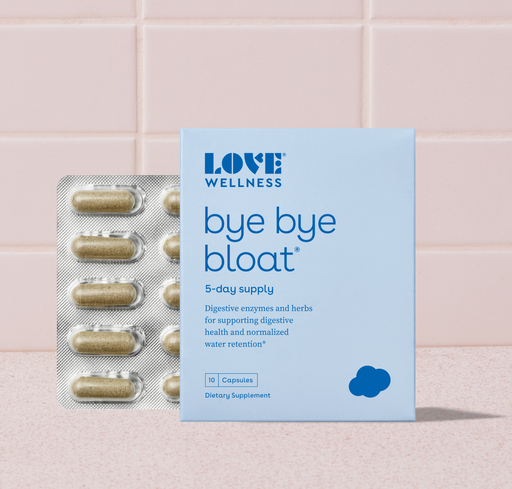 NEW!
NEW!Bye Bye Bloat® Travel Size
Alleviates bloating fast*
$8.99 One-time PurchaseA blend of digestive enzymes and herbs that alleviates bloating fast.* - Gluten-Free & Dairy-Free - Take 1-2 capsules after a meal or before b...
View full details -
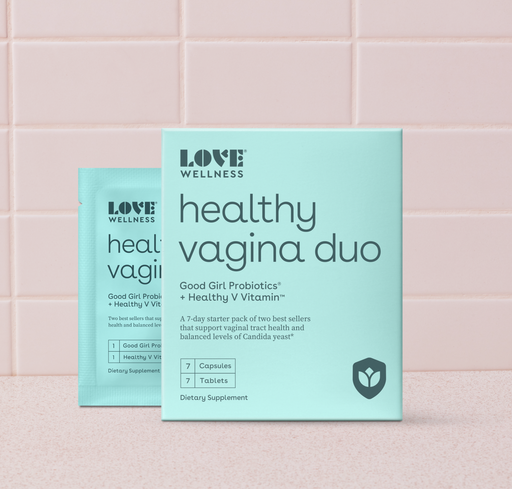 NEW!
NEW!Healthy Vagina Travel Kit
Supports vaginal & urinary tract health*
$16.99 One-time Purchase- 7-day supply — perfectly sized to take on the go so you can keep your routine up when you’re not at home! - Good Girl Probiotics®: Helps to maint...
View full details -
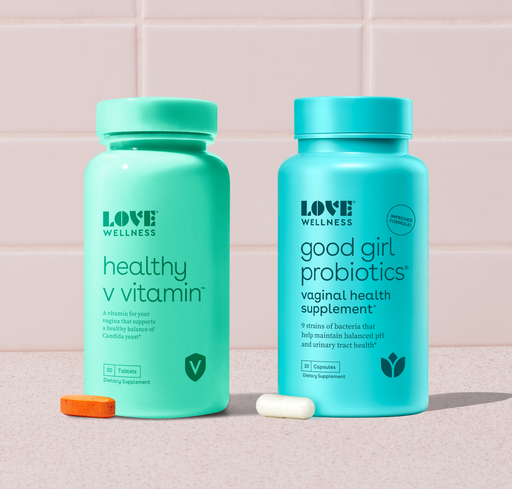

Healthy Vagina Bundle
Supports vaginal & urinary tract health*
$35.24 Subscribe & Save$46.99 One-time PurchaseFor vaginal & urinary tract health. HOW IT WORKS Together, this powerful duo supports your vaginal health by balancing bacteria and yeast. Go...
View full details -
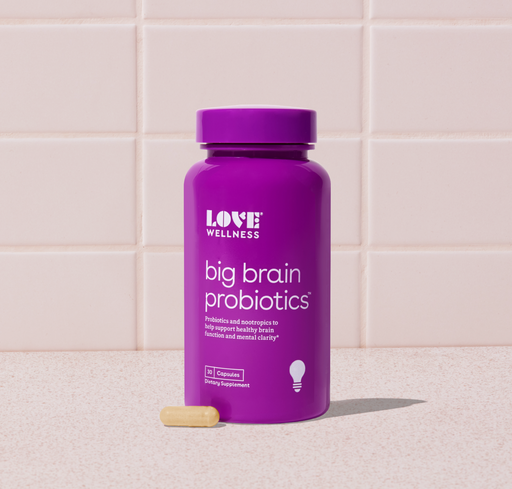
Big Brain Probiotics®
Helps support brain function*
$22.49 Subscribe & Save$29.99 One-time PurchaseA blend of probiotics and nootropics to help support brain function, cognitive health, and help maintain a healthy mood and sense of calm.* - Vegan...
View full details -
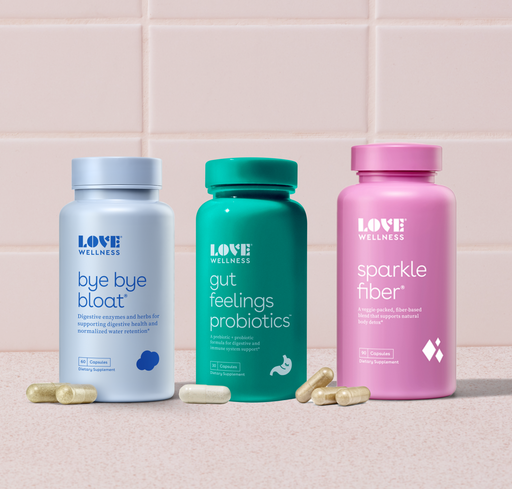

Bloating Bundle
Helps boost your gut health*
$54.74 Subscribe & Save$72.99 One-time PurchaseBeat bloat with this combo of fiber, digestive enzymes, and probiotics that naturally boost your gut health.* gut, bloating, gas, reflux, probiot...
View full details -
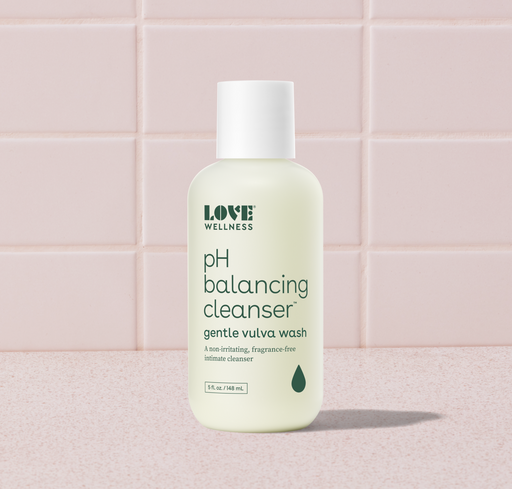
pH Balancing Cleanser™
Gently cleanses your vulva
$11.24 Subscribe & Save$14.99 One-time PurchaseA fragrance-free, gentle cleanser for your vulva to help maintain a balanced vaginal microbiome. - Gluten-Free, Dairy-Free, Vegan - Apply to wet s...
View full details -
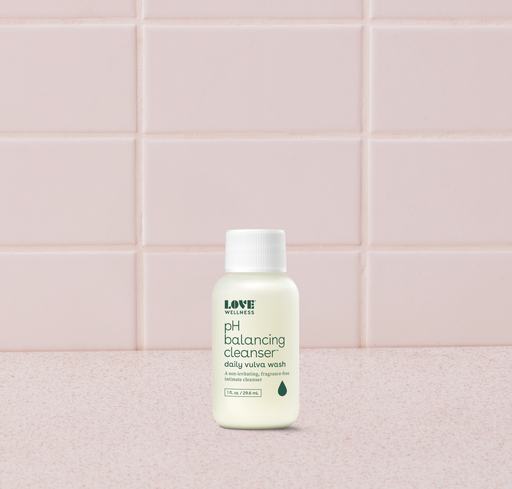 NEW!
NEW!pH Balancing Cleanser™ Travel Size
Gently cleanses your vulva
$4.99 One-time PurchaseA fragrance-free, gentle cleanser for your vulva to help maintain a balanced vaginal microbiome. - Gluten-Free, Dairy-Free, Vegan - Apply to wet s...
View full details -
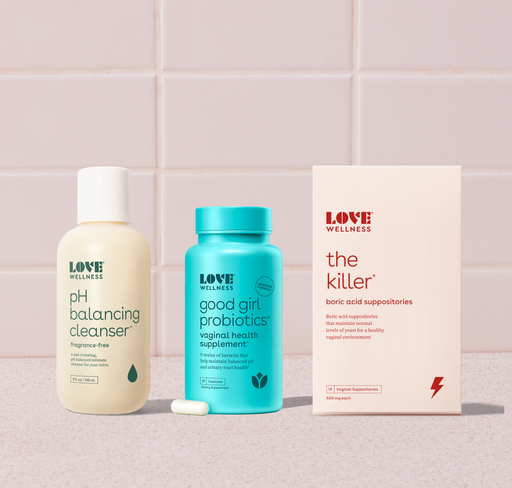

Vaginal pH Bundle
Three, must-have products to keep your pH balanced.
$40.49 Subscribe & Save$53.99 One-time PurchaseThree, must-have products to keep your pH balanced: a daily vaginal probiotic, a fast-acting suppository, and a fragrance-free vulva cleanser.*








